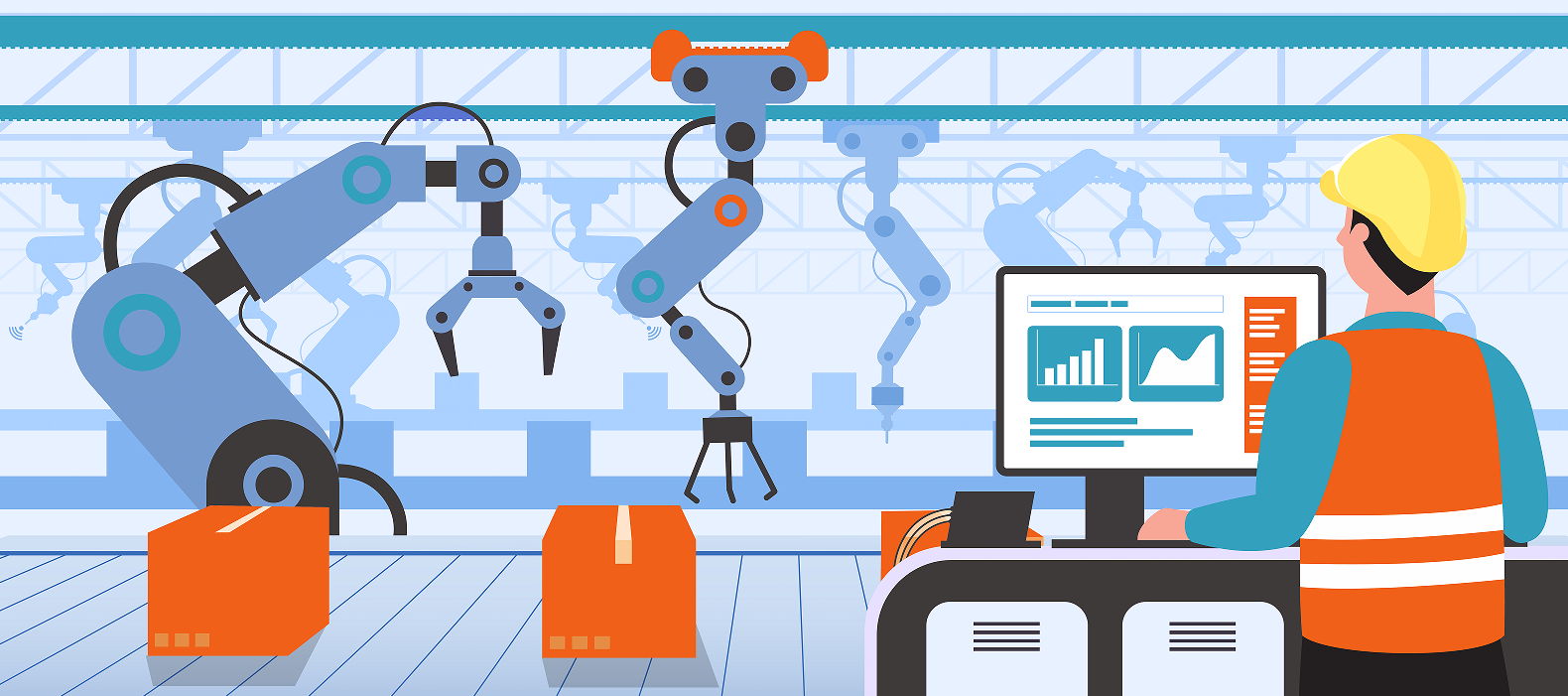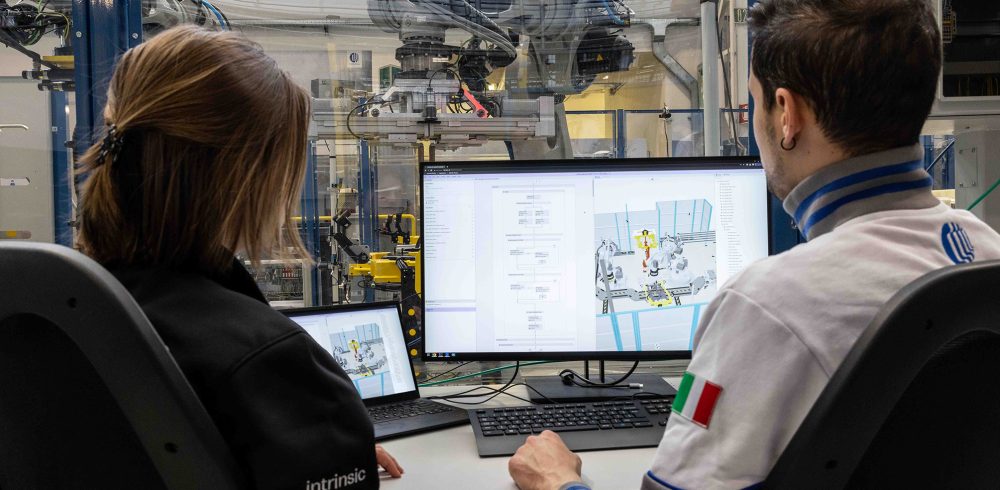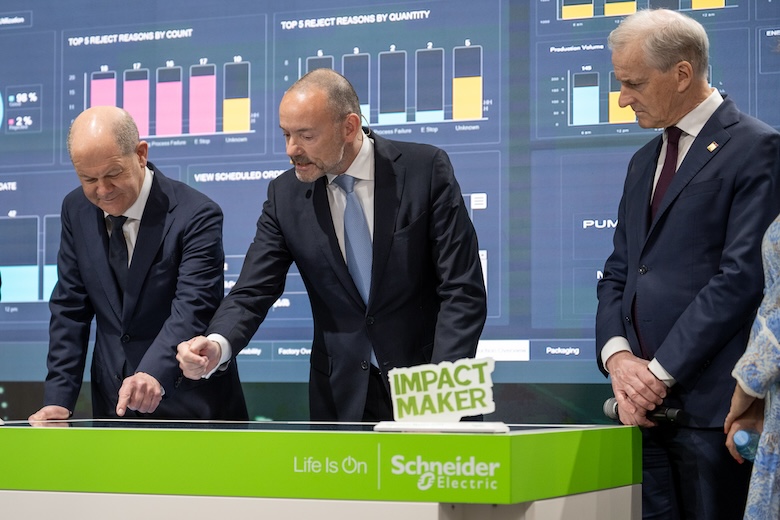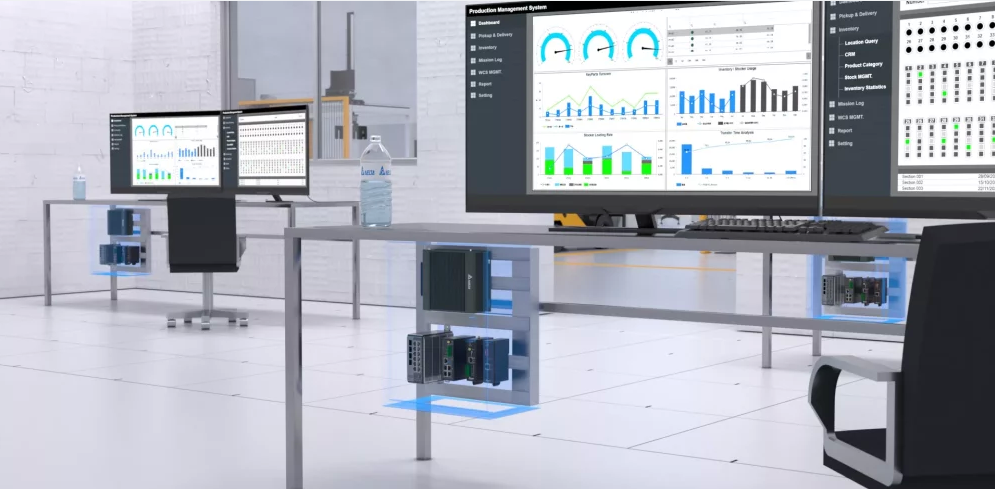The Integration of the IIoT and AI in Smart Factories

The Smart Factory system has highlighted the recent transformations in the manufacturing industry. The talk about the concept is set to be even more pronounced as players jostle for space in the increasingly interconnected and intelligent manufacturing environment.
Two advanced technologies are prominent for their major effect on modern manufacturing: The Industrial Internet of Things (IIoT) and Artificial Intelligence (AI). The integration of these technologies is a big reason we expect smart factories to feature in prominent industrial stories in 2024.
We will briefly explore this integration, focusing on three manufacturing use cases.
The smart factory concept
Before we delve into the integration, it is worthwhile to say something about the Smart Factory concept. It is not a new idea per se, but its exact meaning and relevance is not clear to everyone.
This concept envisions a situation whereby the factory environment is intelligent and fully automated. Consequently, machine learning takes place and triggers more efficient operations and increased savings.
The goal of the Smart Factory is to increase manufacturing productivity, flexibility and overall efficiency. To do so, the factory harnesses the capabilities of the IIoT, AI, automation, big data and several other technologies.
Owing to the growing popularity of smart factories, several main components have emerged. AI and the IIoT have been at the forefront of making the smart factory idea work.
The IIoT encompasses the interconnection of devices, sensors and machines for the real-time collection and sharing of data. It results in a manufacturing environment that is easier to monitor and control.
As part of Smart Manufacturing, the brainpower of AI seeks to bring the learning and decision-making elements to manufacturing devices and systems. In an AI environment, data from people, devices and sensors is collected and subjected to algorithms for optimized factory operations.
Imagine how the future smart factories will be, considering that AI gets smarter every day. Prepare for a future where factories are super intelligent, and products are perfect for the user.
That aside, here are use cases of the IIoT and AI integration in smart manufacturing:
1. Predictive maintenance
Imagine a situation where a home appliance can tell when it is going to fail so you can prepare for it. Predictive maintenance works similarly in the factories.
Sensors provide crucial information, and AI generates the historical behavior of a machine. Patterns help predict when a failure or problem is likely to happen.
The IIoT collects the usual machine data such as vibration, temperature, voltage and current. Cloud-based storage collects this data and supplies it to maintenance personnel for AI-based analysis and insights.
Manufacturers derive many benefits from predictive maintenance based on a blend of IIoT and AI. For instance, with the avoidance of unplanned downtimes, factories can accrue significant reductions in maintenance costs.
2. Enhanced quality control
The National Highway Traffic Safety Administration (NHTSA) recalled millions of vehicles due to potentially malfunctioning airbag inflators. That is how costly poor-quality control in manufacturing can be, even with automation.
Fortunately, the integration of the IIoT and AI in the Smart Factory is making such instances rarer. This convergence ensures real-time detection and correction of process and product defects. Higher quality control enhances product quality through swifter responses and less waste.
With customers encountering fewer product anomalies, satisfaction levels are higher, and so is the brand reputation.
3. Optimized production processes
With AI and IoT, manufacturers can optimize their production processes for higher cost-effectiveness and productivity. No matter the production stage, the IIoT and AI integration can provide significant optimization options.
A factory that employs this technological combination can simulate and analyze present and future production options to identify the most optimal one. Process optimization has helped numerous companies increase their profitability.
A notable evidence of process optimization is a factory that utilizes its assets maximally. As a result, it enjoys overall increase in productivity. The factory operators can forge ahead with their activities in confidence that every piece of equipment is at its optimum and working perfectly.
Wrapping up
As you may notice, the transformative impact of Industry 4.0 is already revolutionizing the manufacturing sector. The Smart Factory, characterized by several exciting technologies, is at the center of the revolution brought by the integration of the IIoT and AI. This integration has helped enhance the flexibility and efficiency of manufacturing to levels that conventional manufacturing cannot match. So, shouldn’t the remaining manufacturers start the journey towards implementing the IIoT and AI in their processes?
-
Delta Unveils Groundbreaking Solutions for Smart Manufacturing and e-Mobility at Hannover Messe 2024
Delta, a global leader in power management and a provider of IoT-based smart gre···
-
Industries Must Embrace Automation To Lower Emissions, Raise Efficiencies, Says Schneider Electric Executive
Global industries need to embrace and not fear automation if they are serious ab···
-
Comau’s Advanced Automation: Facing Challenges and Anticipating the Future of Robotics
• Exponential growth: automation drives the future of emerging sectors. Forecast···
-
Schneider Electric highlights software, automation, electrification and Hannover Messe
Hannover Messe is taking place in Hannover, Germany, from April 22 to 26. At the···
参展地址:中国国际展览中心(朝阳馆)
- Delta Unveils Groundbreaking Solutions for Smart Manufacturing and e-Mobility at Hannover Messe 2024
- Industries Must Embrace Automation To Lower Emissions, Raise Efficiencies, Says Schneider Electric Executive
- Comau’s Advanced Automation: Facing Challenges and Anticipating the Future of Robotics
- Schneider Electric highlights software, automation, electrification and Hannover Messe
- Rockwell Automation banks on digital, green transition in China
- Delta DX-2400L9 Series Industrial 4G/WAN Routers









 Asia International Industry Automation & Intelligent Manufacturing Exhibition
Asia International Industry Automation & Intelligent Manufacturing Exhibition

